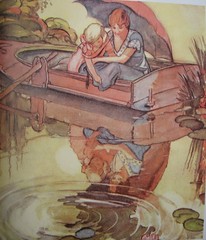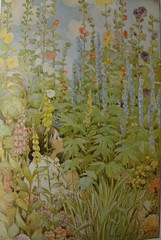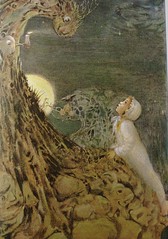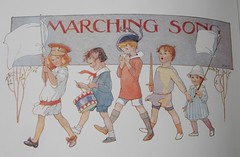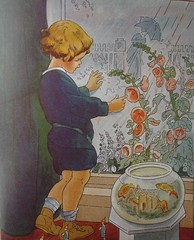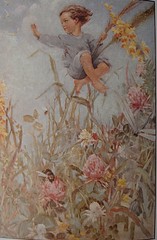I was drawn to Froud's illustrations immediately recognizing their Rackhamesque qualities. In an interview in Fairies World, Froud says he was drawn in by Rackham's trees with faces. They reminded him of climbing trees as a child and the connection he had with the souls of trees.
Froud's illustrations are enlivened by his deep connection to the fairy world:
" It's very interesting, people often think that dealing with faery is a retreat from reality and I say 'no' it is not, it is actually a re-engagement with the world."
Here are some of his earlier works from Fairies and Master Snickup's Cloak, both published in 1979.
I like the fluidity of his mermaid. Froud says fairies are always flowing.
Very pretty bluebell fairy.
You can see the Rackham influence particularly in this from Master Snickup's Cloak. Froud said he used more browns early in his illustrating career, and then moved towards more intense multi-layered colors.

